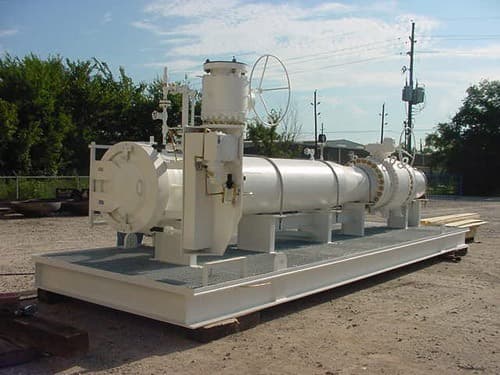Jamison Products Pig Launchers / Receivers are custom-engineered to meet customer, environmental, and industry standards. The Pig Launcher/ Receiver is built for ease of operation and longevity of service. With multiple options available, Jamison will supply the ultimate design that readily meets your technical and commercial requirements.
What is a Pig Launcher/Receiver?
Pigging in the maintenance of pipelines refers to the practice of using pipeline inspection gauges or 'pigs' to perform various operations on a pipeline without stopping the flow of the product in the pipeline. Pigs get their name from the squealing sound they make while traveling through a pipeline. These operations include but are not limited to cleaning and inspection of the pipeline. This is accomplished by inserting the pig into a Pig Launcher - a funnel-shaped Y section in the pipeline. The launcher is then closed and the pressure of the product in the pipeline is used to push it along down the pipe until it reaches the receiving trap - the 'pig catcher'.
If the pipeline contains butterfly valves, the pipeline cannot be pigged. Ball valves cause no problems because the inside diameter of the ball can be specified to be the same as that of the pipe.
What is Pigging?
Pigging has been used for many years to clean larger-diameter pipelines in the oil industry. Today, however, the use of smaller diameter pigging systems is now increasing in many continuous and batch process plants as plant operators search for increased efficiencies.
Pigging can be used for almost any section of the transfer process between, for example, blending, storage, or filling systems. Pigging systems are already installed in industries handling products as diverse as lubricating oils, paints, chemicals, toiletries, and foodstuffs.
Pigs are used in lube oil or painting blending: they are used to clean the pipes to avoid cross-contamination and to empty the pipes into the product tanks (or sometimes to send a component back to its tank). Usually pigging is done at the beginning and at the end of each batch, but sometimes it is done in the midst of a batch, e.g. when producing a premix that will be used as an intermediate component.
Pigs are also used in oil and gas pipelines: they are used to clean the pipes but also there are "smart pigs" used to measure things like pipe thickness along the pipeline. They usually do not interrupt production, though some products can be lost when the pig is extracted. They can also be used to separate different products in a multi-product pipeline.
Why use a Pig Launcher/ Receiver?
A major advantage of piggable systems is the potential resulting product savings. At the end of each product transfer, it is possible to clear out the entire line contents with the pig, either forwards towards the receipt point, or backward to the source tank. There is no requirement for extensive line flushing.
Without the need for line flushing, pigging offers the additional advantage of a much more rapid and reliable product changeover. Product sampling at the receipt point becomes faster because the interface between products is very clear, and the old method of checking at intervals, until the product is on specification, is considerably shortened.


